IDÉE - New Direction #6 - Early Summer 2024
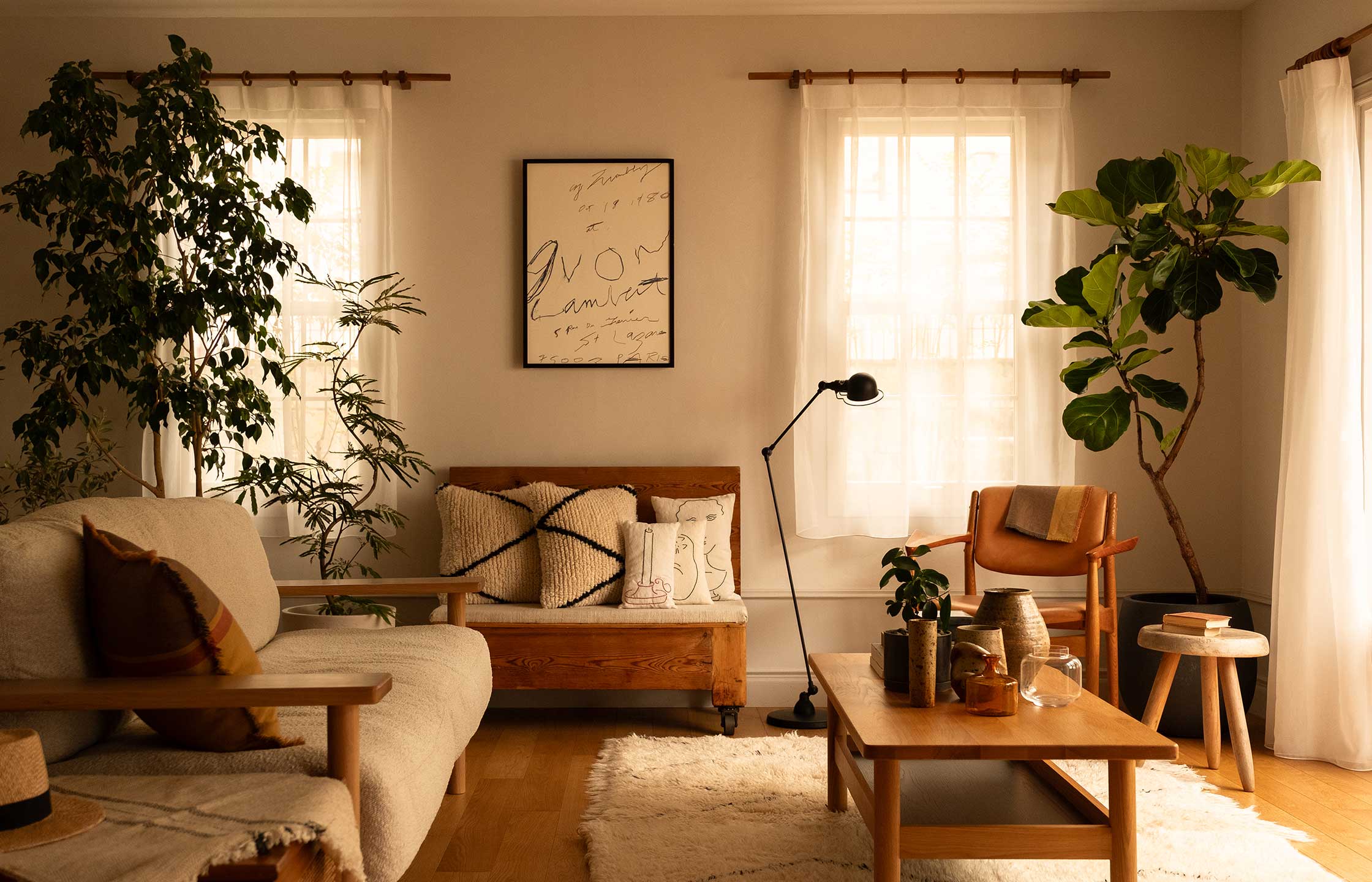





都会の喧騒から離れ、向日葵のように明るい陽射しと心の解放を求め、南へ。
トラバーチン石や黒皮のアイアン、木材などの自然素材を用いた空間、
質感のあるラタンの家具やヴィンテージアイテム、
風合いのあるフレンチリネンで、落ち着いた雰囲気に。
おおらかで存在感のあるテーブルウェア、
手の痕跡を感じるクラフトや民藝品を選ぶことで
暮らしに程良いアクセントをあたえてくれます。
さまざまな文化が行き来する港町から生まれたライフスタイルは、
私たちの生活に、ゆとりと輝きをもたらしてくれます。
Venture to a southern coastal town, far away from the urban hustle and bustle, in search of bright sunshine and peace of mind.
Travertine stone, black iron, wood and other natural materials complement rattan furniture, vintage items and French linen, creating a relaxed atmosphere with an air of elegance.
Tableware with a generous presence joins a selection of handmade crafts and folk art, providing charming accents to living spaces.
In this port town, a lifestyle shaped by various cultures brings colour and comfort to daily life.







IDÉE - New Direction #6 - Early Summer 2024
東京を拠点に活動。デザイン・アンソロジーとその親会社であるフィフス・ブラックのクリエイティブディレクター。ブランド戦略家、エディトリアルコンサルタントとして、イソップ、ルイ・ヴィトン、ローズウッドホテルなど、世界的なクライアントのプロジェクトを手がけている。
Based in Tokyo, Jeremy Smart is a creative director, brand strategist and editorial consultant, delivering projects for a global roster of clients such as Aesop, Louis Vuitton and Rosewood Hotels, through his role as creative director of Design Anthology and its parent company Fifth Black.
ノアム・レヴィンゲルは1985年イスラエル生まれのヴィジュアル・アーティスト。テルアビブ大学で美術史の学士号を取得し、2017年より東京を拠点として活動。レヴィンゲルの作品は、ドキュメンタリースタイルのアプローチで、アイデンティティ、記憶、人間の経験といったテーマを探求している。彼の写真や映像は、イスラエルや日本のグループ展に出展され、世界中の数々の出版物で取り上げられている。2024年、レヴィンゲルは東京の The White で、2回目の個展『ENDLESS SEARCH IN DIFFERENT MOVING DIRECTIONS』を開催。
Noam Levinger is a visual artist. Born in Israel (1985), he received his BA in Art History from Tel Aviv University and he has been based in Tokyo since 2017. The works that he creates explores themes of identity, sexuality, memory, and the human experience through a documentary-style approach. His photographs and videos have been exhibited in group shows and have been featured in publications worldwide. In 2024 he held his second solo exhibition, titled "ENDLESS SEARCH IN DIFFERENT MOVING DIRECTIONS", in Tokyo (The White).
前回に続きスタイリングを担当した “Design Anthology” のジェレミー氏と、今回撮影を担当したノアム氏の二人に、PRの新川が話を聞いた。
Following on from the previous feature, Design Anthology’s Jeremy Smart, who oversaw the styling of the visuals, and photographer Noam Levinger were interviewed by IDÉE PR manager Natsu Niikawa.
まずはじめに、ノアムさんの出身とどうして日本でこの仕事をすることになったのかを教えてください。
ノアム:7年間日本にいるんですが、言葉にしてみればもう7年なんだっていう感覚です。最初は、私のパートナーに日本で仕事が見つかって「仕事が見つかったんだ、行かない?」と言われて喜んで来ました。人生の一大イベントみたいな形で東京に来たのが7年前。テルアビブから来たのですが、ここに来る前はラジオ局で仕事をしていました。
ラジオ局ではどんな仕事をしていたんですか?
ノアム:内容の決定や設計です。写真は趣味で、大学では美術史を専攻していました。でも、日本のラジオ局は全て日本語だから難しかったんです。それで新しいことに挑戦する機会を得ました。
日本に来て7年間ずっと写真家として活動されているんですか?
ノアム:徐々にですね。元々日本は建築物にしても人々にしても美しい瞬間がたくさんあるので、それをカメラに収めるというのは素晴らしいことでした。スローペースで発展していって、自分で仕事を雑誌に紹介したりして、今に至るといった感じです。
First of all, a question for Noam: where are you from and how did you end up working in Japan?
NOAM: I’ve been in Japan for seven years, and in saying that, I realise just how long it’s been. It all started when my partner found work here and said, “I’ve got a job, want to join me?” I was glad to come along. Moving to Tokyo seven years ago was a major life event for me. I’m from Tel Aviv and worked in radio before coming to Japan.
What kind of radio work were you involved in?
NOAM: I was involved in selecting and planning content. Photography was a hobby. I majored in art history at university but here in Japan, all of the radio programs are in Japanese, which would have been difficult, so I took the chance to try something new.
Have you been working as a photographer since arriving in Japan seven years ago?
NOAM: Over time, I gradually established myself as a photographer. Whether it be architecture or people, there are so many beautiful moments here and so it was amazing to capture them. Everything grew at a slow place. I shared my work with magazines, which led me to where I am today.
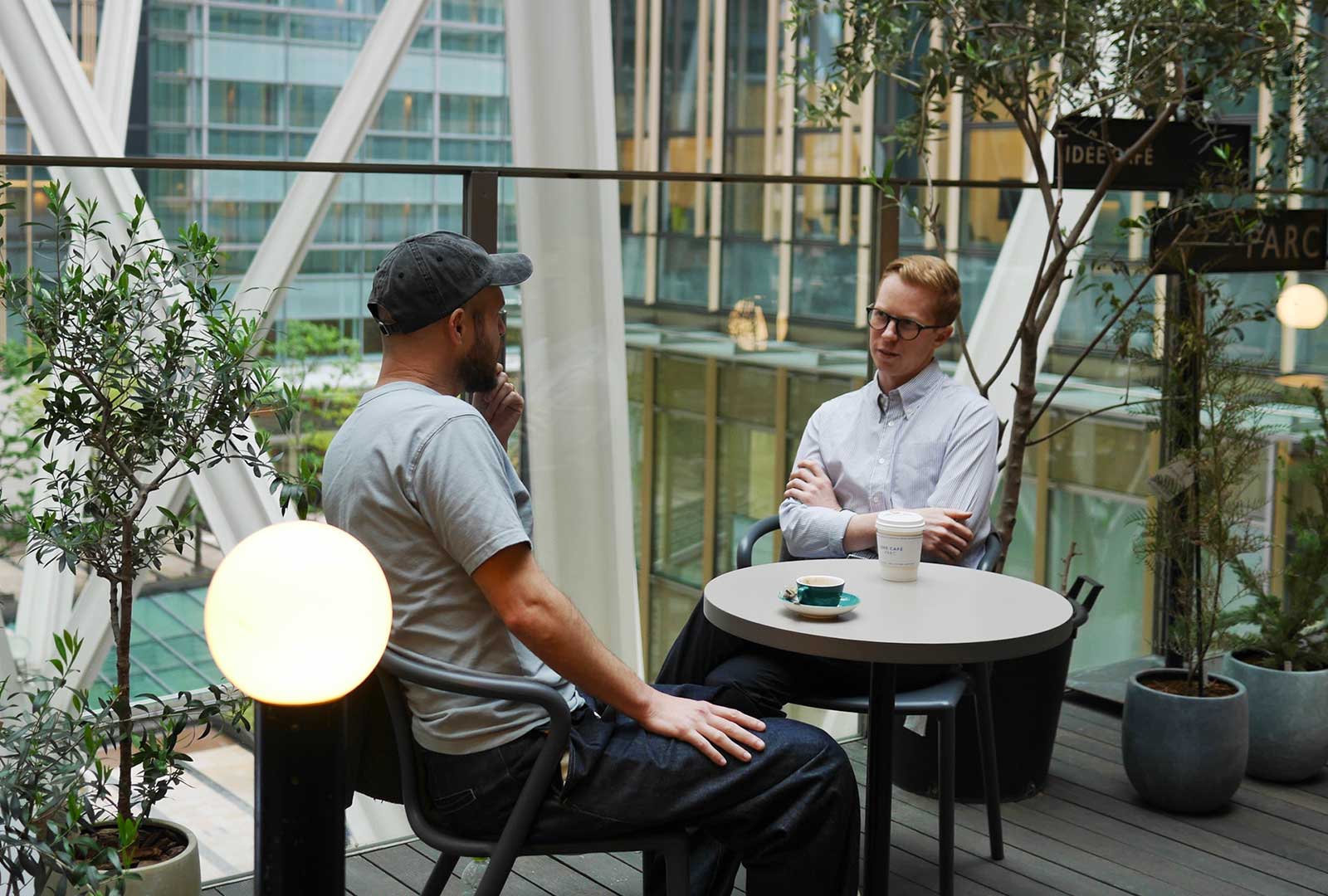
写真以外の仕事をすることを考えたり、すでにしていたりは?
ノアム:私自身は何年後にどうなりたいという目標を持ってそれに向かうタイプではなくて、人生が連れていってくれる場所に流れに身を任せて辿り着くように生きてきて、今写真を仕事にしています。もし8年前に同じ質問をされていたら、まさか8年後に東京に行って写真家になっているなんて夢にも思わなかったから、口にもしなかったでしょうね。
ジェレミー:ラジオでは、例えばモーニングショーなどで攻撃的なコメントをするようなDJ(ショックジョック)がいるけど、そういったこともできたかもしれないね(笑)!
ノアム:そうかもしれないね(笑)。
ラジオ局では15年間働いて、そのほとんどは裏方でした。ときどきマイクの前に立つこともあったけれど、褒めてくれたのは母だけ。それで裏方に徹するべきだって気づいたんです(笑)。
そうでしたか(笑)。ジェレミーさんも以前お話を伺った時、日本に来ること自体が目的という訳ではなく、次にどこが自分の環境に合うか探していたら日本だったとのことでしたね。そして友人の紹介で今の仕事に就くことになったと。二人とも自然の流れでここまで辿り着いたという感じですよね?
ジェレミー:その通りで、すごくいいポイントだと思います。何が何でも東京に移住したかったというより、流れに身を任せてやってきました。人生はさまざまな分岐点があって、時にその流れに乗ることが必要な時もあります。
まさにそうですね。
Have you thought about doing any other work outside of photography?
NOAM: I’m not the kind of person who sets goals for where they want to be. I usually go with the flow and see where life takes me, which is how I ended up working in photography. If you’d had asked me the same question eight years ago, I wouldn’t have even dreamt of moving to Tokyo and becoming a photographer.
JEREMY: In radio, there are “shock jocks” who are known for making outrageous comments on the morning shows and so on. Perhaps you could have done something like that! [laughs]
NOAM: Maybe I could have. [laughs]
I spent fifteen years in radio, but mostly hiding backstage. The few times I ventured in front of the mic, it was only my mum who called to compliment me. That's when I realizsed I should probably stick to the behind-the-scenes action. [laughs]
I see. [laughs] When we spoke to Jeremy last time, he said that rather than being focused specifically on Japan, he found it was the best fit for his needs. He also came across his current job through a friend. Do you both feel that a natural course of events led you here?
JEREMY: For sure. I think you make a really good point. Rather than having my heart set on moving to Tokyo no matter what, I just went with the flow. Life has a way of leading you down various paths and sometimes you just have to go with it.
That’s exactly right.
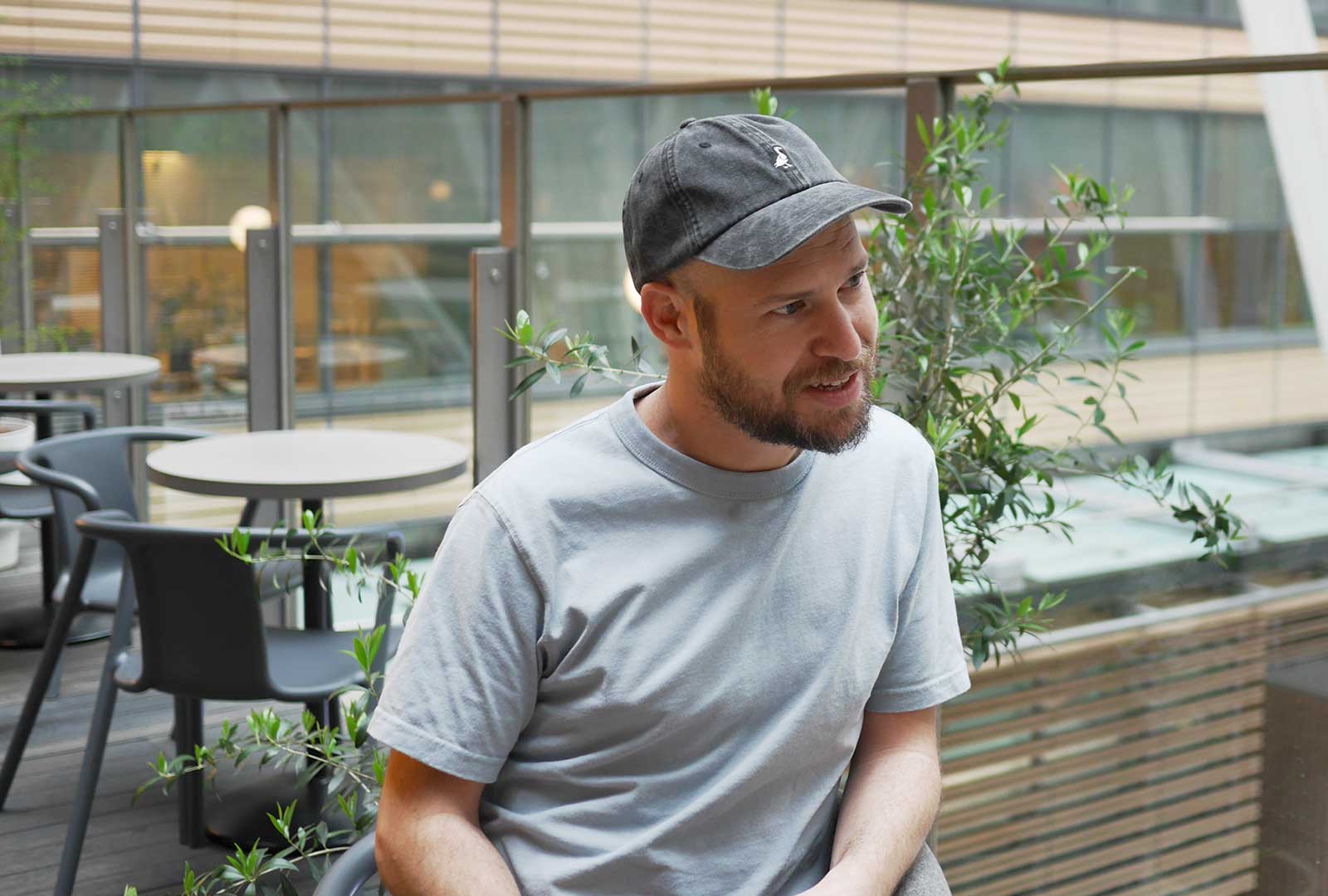
ノアム:私達はクリエイティブな世界にいるので、企業にいる人のように何年後にはこのポジションにいるという計画を立てて進むのとは少し違うんじゃないかな。
私は企業にいるけれど、今の仕事には自然と流れ着いた感覚です。私が大学で学んだのは法学で、今の仕事とは全く違うんです。それからデザイン学校に通い、インテリア設計の道へ進み、東京から京都に移り住んで、そしていつのまにかここにいます。
ジェレミー:素敵な人生。今も法律のことやりたいと思ってる(笑)?
ノアム:法律も含めて自分を取り巻く全てのものごとや経験が組み合わさって、イデーに導かれたってことかな。
その通りだと思います。 さて今回はジェレミーさんは2度目のスタイリングで、ノアムさんには初めて写真を依頼しました。お二人は以前からお知り合いでしたか?
ジェレミー:イデーのおかげで友達になれたんです。これまで一度も一緒に仕事をしたことがなくて、今回のプロジェクトで初めて会いました。
一緒に仕事をしてみて同じものを作りあげてどう感じましたか?私達から見ると、とっても気が合っているように見えましたが。
ジェレミー:会ったことがない人と仕事をするというのは面白いけどリスクでもあります。どういう風になるか全くわからないし、すごくいいかもしれないし、悪いかもしれない。でも結論から言うとすごく良かったです。
理由の一つとして、彼はインテリアや建築を撮る写真家ではなかったから、今までやったことのない新しいものを作り上げるという部分で逆に良かったのかもしれないです。
前回の撮影はベン・ホスキングさんですが、彼はインテリアや建築のバックグラウンドがあったので、前回のテーマの雰囲気に合ったきっちりとした印象に仕上がりました。でも今回はそういったバックグラウンドがないから、もう少し柔らかい雰囲気が出て、今回のテーマに沿っていたんじゃないかな。
NOAM: We’re involved in the creative scene, so I guess it’s a bit different to the corporate world, where people plan to reach a position in a number of years and work to accomplish that goal.
Even though I work for a company, I feel as though I ended up here naturally. At university I studied law, which is completely different to my current job. After that I went to design school, worked in interior design and moved from Tokyo to Kyoto. And before I knew it, I was here.
JEREMY: That’s amazing. Do you still want to do law? [laughs]
NOAM: The sum of all of the things around you and the experiences you’ve had, law included, seem to have led you to IDÉE.
I think so too. Well, this is Jeremy’s second time overseeing the styling, while Noam is shooting for the first time. Did you know each other before this shoot?
JEREMY: Thanks to IDÉE we’ve become friends. We’d never worked together and actually met for the first time on this project.
What was it like working together to create something? It really looked like you got along well.
JEREMY: It’s interesting to work with someone you’ve never met before, but there’s also some risk involved. You have no idea how it’s going to go. It may turn out amazing, it may turn out terrible. But in conclusion, it came together really nicely. One of the reasons is that Noam does not usually shoot interiors and architecture, so I think it was great that we could work together for the first time and create something new.
The photographer for the previous shoot, Ben Hosking, works in architecture and interiors, so the images were a little more neat, which matched the theme. On this occasion, having a photographer with a different background led to a softer atmosphere that aligned well with the theme.
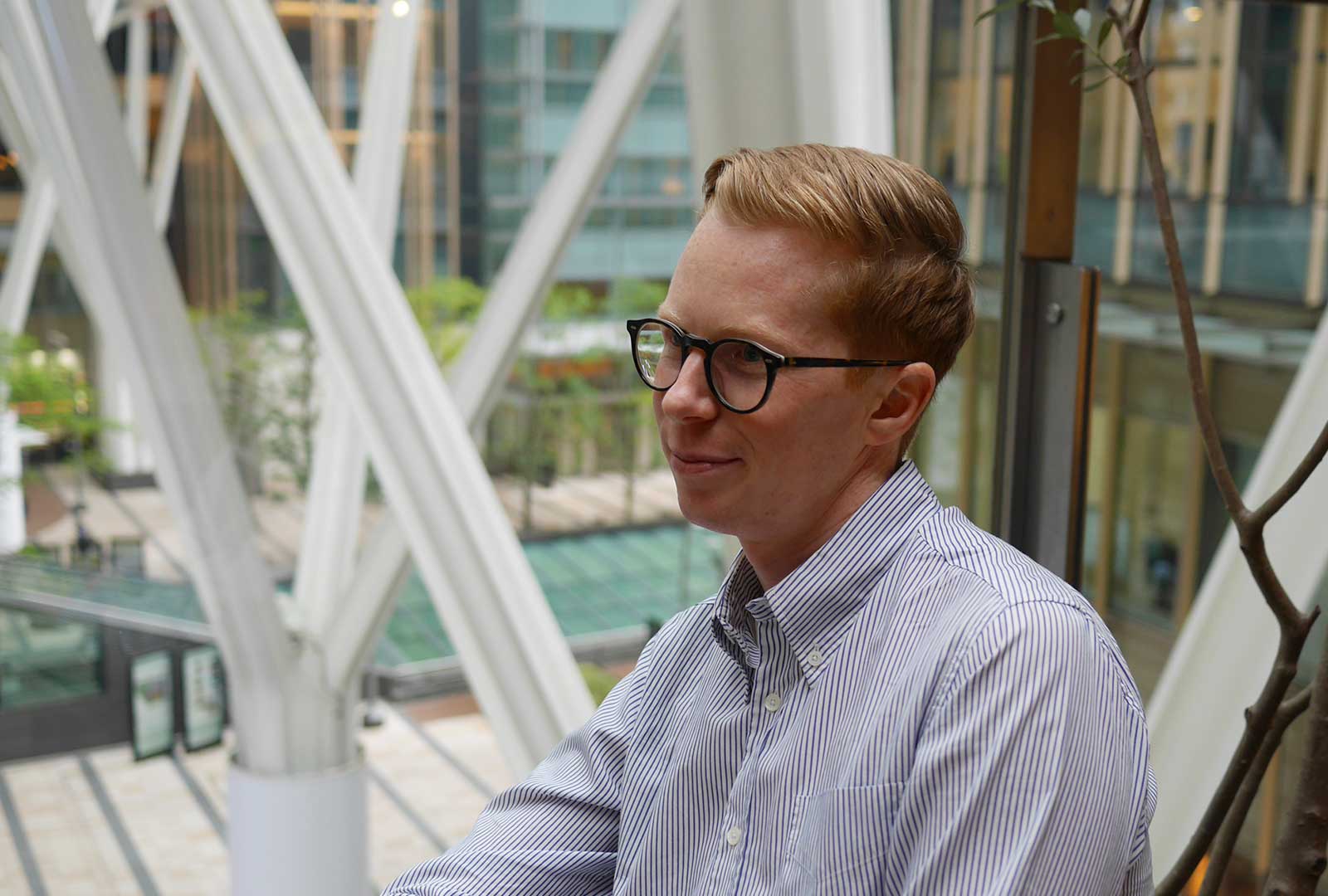
ノアム:リスクを取るとジェレミーも言ったけど、私にとってもすごくリスクがありました。
今までファッションショーのバックステージを撮ったことはあるけど、その時もすごく小さなチームでした。でも今回の撮影はもう少し規模が大きくて、テーマはインテリアだからすごく怖かった。でも、結果として良かったし、チャレンジすることが新しい出会いへ導いてくれるんじゃないかと思います。
二人にとってチャレンジングな撮影だったとのことですが、イデーにとってもそうでした。これまでの撮影は日本のスタイリストや写真家と取り組んできたので、海外からの違う視点が欲しかったんです。それがとても成功して良かったと思います。
今回のテーマは "Heliotropism ~ Everybody Loves the Sunshine" ですが、このテーマを聞いて思ったことはありますか?
ジェレミー:季節感がすごくポイントになると思いました。最初に話し始めたのは1月だけど、初夏のことを話していましたよね。だからすごくロマンチックな想像から始めました。全く別の季節を考えなきゃいけなかったけど、逆にそれに対する憧れが湧きました。
ノアム:私はこのテーマを見て、実際の場所をイメージしました。例えば少し霞んだ黄色っぽい初夏の日とか。撮影の日は雨だったからジェレミーと私は実際にはないものを作らなきゃいけなかったけど、それも含めて初夏のイメージを想像して楽しみました。
NOAM: Jeremy mentioned taking risks and in my case, it was a big risk as well. I've previously shot backstage at fashion shows, but that involved an incredibly small team. This shoot was a bit larger in scale and the theme was interiors, so it was really scary. In the end it worked out well and I think it was good to take the risk as doing so can lead to new discoveries.
It was also a challenging shoot for IDÉE. Up until now, we’d only worked with Japanese stylists and photographers, and so were seeking a different perspective from a non-Japanese point of view. I’m glad that the shoot was so successful. When you heard the theme, “Heliotropism ~ Everybody Loves the Sunshine”, what were your impressions?
JEREMY: I thought that seasonality would be a really key point. Our first discussion took place in January, but we were already thinking about the start of summer. For that reason, it felt like a really romantic idea. I had to think about a completely different season, which gave me a sense of longing.
NOAM: When I saw the theme, I imagined the setting of an actual photo. For example, a slightly hazy, golden day in early summer. It actually rained on the shooting day, so Jeremy and I had to create something that wasn't there. As for the rainy conditions, we made the most of it and had some fun, imagining an image of early summer that included those feelings.
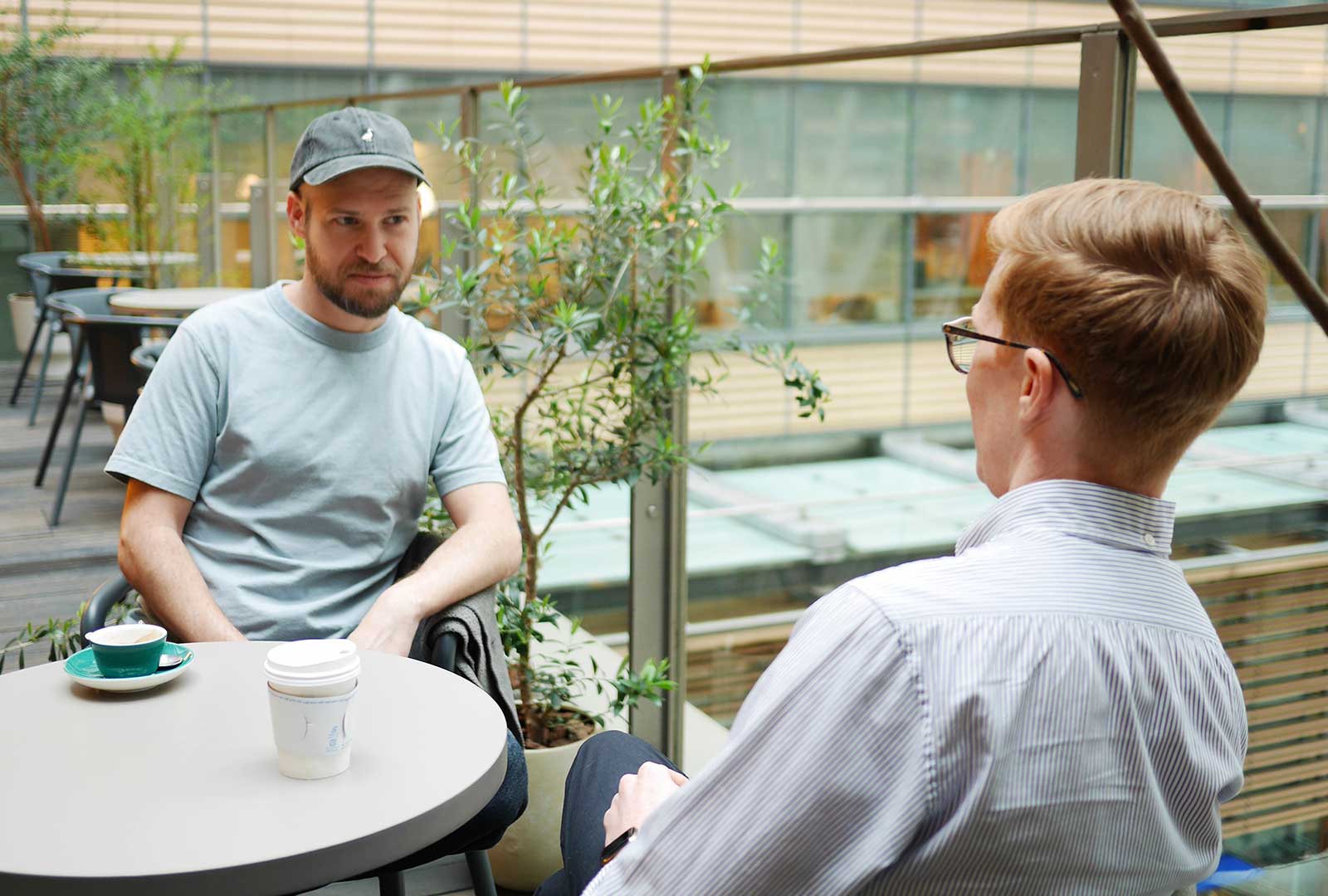
今回提案したいテーマですが、初夏の汗ばむ季節に都会から離れて落ち着いた南の街で、開放的な所で過ごすというものです。お二人はどのような過ごし方をしますか?
ノアム:イスラエルではヴァカンスは日常の一部です。仕事を終えて15分でビーチに行って友達と会って、海辺でくつろぎ夕日を眺めるという感じで休むことは日々の一部。サンダルと短パンでさっと動き回るのに対して、東京は「夏が来た。焼けないように日傘を差そう。」ってところが対照的ですね。
ジェレミー:オーストラリアも同じような感じで、1日の終わりに楽しむ時間を過ごしますね。
憧れますね。日常にリラックスする時間をプラスすることは、豊かな暮らしに繋がると思っているので、自然を楽しむ余裕というか、その気持ちがあるのはいいことだなと思います。
ジェレミー:季節に対して日本人はとても敏感で、感度が高いですね。
ノアム:本当に毎週違う季節を感じます。日本では常に季節が変わる感覚がありますね。もちろん気温もあるけど、自然環境に人々が呼応している気がします。季節に対してのアプローチや関係性がすごく起因していると思います。
In terms of the theme, it's about getting away from the city during the sweaty early summer period to spend some time in the open in a relaxed southern town. How do you usually spend this time of year?
NOAM: In Israel, holidays are a part of a daily life. After work, you can be at the beach in fifteen minutes to meet friends, relax by the water and watch the sun go down. Taking time off is part of each day. You can move around briskly in sandals and shorts, which is a complete contrast to Tokyo where it's like, "Summer is here. Time to put up a parasol and avoid getting burnt."
JEREMY: It's similar in Australia, where people take time to enjoy themselves at the end of the day.
I admire that. Taking time to relax within daily life can no doubt enrich your way of life, and I think it's great to enjoy nature.
JEREMY: I feel that Japanese people are very sensitive to the seasons.
NOAM: It really seems as though there’s a different season every week. In Japan, there is a sense that the seasons are always changing. There's obviously the temperature, but also the way in which people respond to the natural environment. I think this has a strong bearing on their approach and relationship to the seasons.
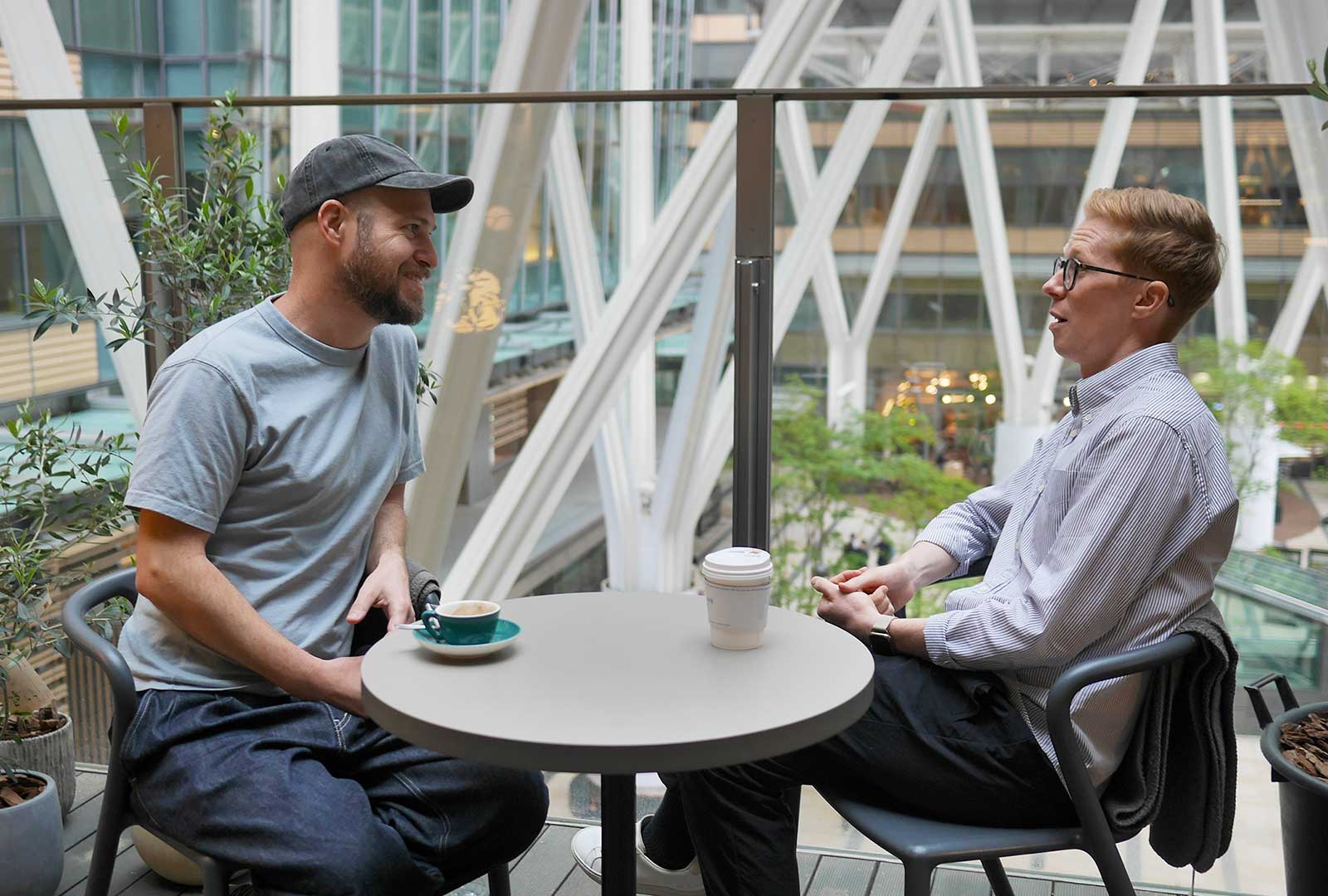
そうですね。日本は四季があると言われるのは敏感だということだと思います。インテリアの設えも、日本では季節毎に替えることがあります。そういうことをお二人はされますか?
ジェレミー:部屋の中を大きく変更するというよりは、観葉植物を替えたりベッドのシーツを綿からリネンに替えるとかはするかもしれないです。でも家にあるものが自然と変化していって、何もしなくても季節は感じますね。光の入り方やカーテンの揺らぎ、窓の開き具合なんかで、iPhoneで写真を撮ったら季節が判るんじゃないかな。
ノアム:私も特別なことなしませんが、ラグや文化的なものを替えることがあります。あとは夏を思い起こさせるような自分にとって特別なものをコレクションしていて、いつか素敵な家を手に入れたらそこに飾りたいと思っています。
では最後に、今年の初夏から夏にかけてはどのように過ごしたいと思っていますか?
ノアム:決まった予定はないけど、家族に会いたいです。ギリシャで大きな家を借りて、家族で集まれたらなと思っています。
もう一つ、夏の食材を使って料理をするのを楽しみにしています。もう待ちきれないです!
野菜も果物も美味しくなりますからね。
ジェレミー:私は沖縄に行きたいです。けど最近はかなり混んでいますよね。
日本人も沖縄が大好きだし、より夏を感じられてサンシャインがすごいところですね!良い計画だと思います。
今日はありがとうございました。
I understand. I think that the presence of four seasons in Japan shows this sensitivity. In Japan, people often change their interior spaces each season. Is this something you also do?
JEREMY: Rather than making big changes to the rooms, my houseplants tend to evolve with the seasons, or I may swiftswitch the bed sheets from cotton to linen. However, the things in my home seem to change naturally, so there's always a sense of seasonality, even if I don’t do anything. It might be the light, the way the curtains flicker or how the windows are open, but if I take a photo on my iPhone, it reflects the current season.
NOAM: I don't do anything especially, but sometimes I will change the rug or cultural items. Aside from that, I have a collection of special things that remind me of summer and one day I'd like to find a great house and use them as decoration.
Finally, how would you like to spend your early summer and the rest of the summer months this year?
NOAM: I don't have any fixed plans, but would like to see my family. I think it would be great to rent a large house in Greece and get everyone together. One more thing: I'm really looking forward to cooking with summer ingredients. I really can't wait!
In summer, fruits and vegetables taste even more delicious.
JEREMY: I’d love to go to Okinawa, but it’s so busy these days.
Japanese people love Okinawa as well. It feels even more like summer and there’s so much sunshine!
Your plans sound great and thank you both for your time today.